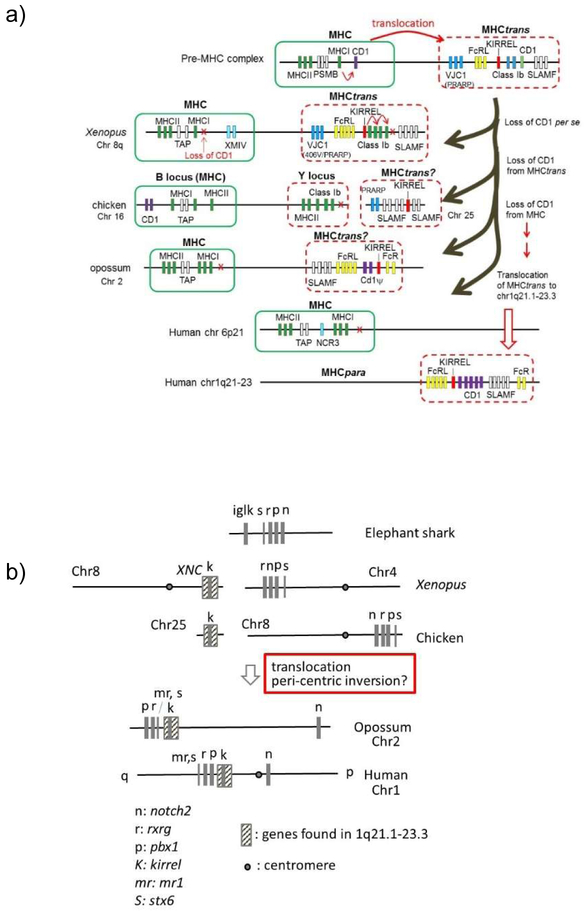Figure 5.
a) Origin of the translocated MHC (MHCtrans) region and its subsequent translocation in placental mammals.
The region we describe as MHCtrans is found at the telomere of the MHC chromosome in Xenopus, chickens, and marsupials, suggesting that the translocation of MHCtrans to non-MHC chromosomes occurred in placental mammals. MHCtrans contains other immune genes such as SLAMF, FcR-like and IgL-like (VJC1406), suggesting that ancestors of these genes were present in the primordial MHC, e.g. C2 and VJ IgSF-endoding genes. MHC and MHCtrans are shown in solid green and dotted red boxes, respectively.
b) Inferring the timing of the p-q split on human chromosome 1. Chromosomal locations of the NOTCH2 gene from other marker genes, RXRG, PBX1, which correlates with the evolutionary timing of the p-q split between birds and mammals. The timing of the p-q split also correlates well with the translocation of MHCtrans into the 1q21.1-23.3 region (indicated by the hatched box including the KIRREL gene). MR1 is a non-classical class I that maps to human chromosome 1, outside of the CD1 region, is found only in mammalian lineage, and its evolutionary origin is unknown.

